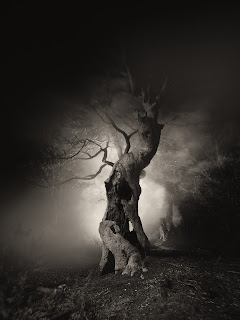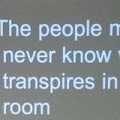The Haunted Landscape calls again with demons in the landscape, kings sleeping beneath the ground, and the ghosts that have followed us through all of human history. Join the London Fortean Society at Conway Hall (or on the live stream) for a day of talks and short films on the folklore of Britain and beyond.
Saturday 19 November 2022
Doors, books stall, and coffee from 9.30am.
Talks 10am - 5 pm.
Lunch 1pm-2pm (ish)
£25 / £18 concessions. £15 live stream. Advance tickets
Conway Hall, 25 Red Lion Square, London WC1R 4RL
Tube: Holborn
Directions
A link to all live streams will be sent out to all online participants after booking.
Mailing List
Facebook event page (London)
Facebook event page (Livestream)
Talks
9am Registration starts.
9.30am Doors
10am Jasper Goodall - Into the Wild Night
10.30am Roy Vickery - Folklore and Dangerous Plants
11am Break
11.20am Dr Victoria Flood - Alderley Edge and the Dead Man
11.50pm Break
12.10pm Daniel & Clara - Avebury Imaginary: a personal history of a stone circle & hill
1pm Lunch
2.00pm Jeremy Harte - John Wesley and the Devil: Hell-Wrestling with the Magic Methodists
2.30pm Brice Stratford - The New Forest: A Pocket of Pixies
3pm Break
3.15pm Lisa Schneidau - Monsters from the Deep: River Folk Tales of Britain and Ireland
3.45pm Break
4.15pm Irving Finkel - The First Ghosts
5pm End
 |
| He is waiting Credit: Iain Rowan @iainrowan / @mapsofthelost |
Irving Finkel - The First Ghosts
Irving Finkel takes us back to the very beginning. A world-renowned authority on cuneiform, the form
.jpg) |
| creative commons |
of writing on clay tablets that date back to 3400BC, Finkel has embarked upon an ancient ghost hunt, scouring these tablets to unlock the secrets of the Sumerians, Babylonians, and Assyrians to breathe new life into the first ghost stories ever written. In his book The First Ghosts, he uncovers an extraordinarily rich seam of ancient spiritual wisdom which has remained hidden for nearly 4000 years, covering practical details of how to live with ghosts, how to get rid of them and bring them back, and how to avoid becoming one, as well as exploring more philosophical questions: what are ghosts, why does the idea of them remain so powerful despite the lack of concrete evidence, and what do they tell us about being human?
Dr. Irving Finkel is Assistant Keeper of Ancient Mesopotamian (i.e. Sumerian, Babylonian, and Assyrian) script, languages, and cultures Department: the Middle East at the British Museum, headquartered in London's Bloomsbury. He is the curator in charge of cuneiform inscriptions on tablets of clay from ancient Mesopotamia, of which the Middle East Department has the largest collection - some 130,000 pieces - of any modern museum. This work involves reading and translating all sorts of inscriptions, sometimes working on ancient archives to identify manuscripts that belong together, or even join one another.
Brice Stratford - The New Forest: A Pocket of Pixies
Brice Stratford discusses the specific pixie traditions of the New Forest, which survive strongly today in genuine, lived belief as a real exception to the rest of the country. Most are familiar with the folkloric survival of the Cornish and Devonian pixie traditions and are aware that pixie belief once extended from there across the entire south coast, but the survival of it in the New Forest as a distinct pocket has not been commented on, and the character of the pixies there has evolved in a different direction to that of Cornwall and Devon, wilder and more reflective of the New Forest “Commoning” practices and culture, in whose community the stories have survived,
Lisa Schneidau - Monsters from the Deep: River Folk Tales of Britain and Ireland
Weed-strewn crones, just waiting to pull you into the river. Swans with serious grudges and eels with
drinking problems. Hideous creatures that never see the light of day… until you fish them out of the river. Lisa Schneidau tells tall tales from the dark side of our freshwater folklore.
Lisa Schneidau is a storyteller and environmentalist based in Dartmoor. She seeks out, and shares, traditional stories about the land and our complex relationship with it. Lisa is the author of
River Folk Tales of Britain and Ireland,
Woodland Folk Tales of Britain and Ireland, and
Botanical Folk Tales of Britain and Ireland (all History Press).
She tells stories at events, nature reserves, art centers, and schools, including performance storytelling, training, and storytelling development within education, as well as helping to run South Devon Storytellers and Dartmoor Storytellers. Lisa trained as an ecologist and has worked in British nature conservation for twenty-five years.
Jeremy Harte - John Wesley and the Devil: Hell-Wrestling with the Magic Methodists
 |
| no idea... ask Jeremy |
The black flapping thing at the end of the lane was no trivial superstition but the Devil in person. Had not John Wesley himself grown up in the fear of the Lord through living in a haunted house? Many giants great and tall went stalking through the land, his followers sang; and if the thunder of the ogre’s voice usually reduced itself into the catcalling of an unregenerate mob, that only confirmed its diabolical nature.
Satan was a physical presence who clutched and dragged; supernatural visitants gave not just advice
and solace but enough light to illuminate a cottage room; spiritual progress was noisy and physical, trembling, crying, struggling. Men of the people, the popular preachers dreamed of what was to come and were guided by special providences, shadows of the fortune-telling tracts that they had condemned. Through grace, they cast out fiends, dispelled ghosts, and crushed the horrid powers of witches. Everything claimed for magic by the unworthy was done for the saints by zeal.
Jasper Goodall - Into The Wild Night
Jasper Goodall describes his work as portraying the haunted nightscape. Inspired by, among many things, the historical Swedish folk tradition of Årsgång, translated as ‘the omen walk’. It is traditionally performed on new year’s eve or the winter solstice. At midnight one must walk alone and in the dark through woods to a specific location, often the village church. Inside the woods, one was said to encounter entities or manifestations that acted as omens for the coming year. His photographs are an attempt to capture stillness, solitude, and the sense of a hushed, waiting presence that is perhaps more palpably felt in the hours of darkness.
 |
| Jasper Goodhall |
Goodall’s
nocturnal photographs have been described as at once beautiful and terrifying. The images reference the idea that a kind of thrilling delight can be gleaned from viewing something eerie or disconcerting — imagining yourself in the dark places he visits. He teaches creativity and visual communication. He is a senior lecturer at the University of Brighton where he has taught generations of visual communicators for almost 20 years
Dr. Victoria Flood - Alderley Edge and the Dead Man
Alderley Edge in North-east Cheshire (UK) is a red stand-stone escarpment above a subterranean network of mines, associated with a long-lived legend of sleeping heroes, who will awaken at a time of national crisis. A non-built heritage site, now managed by the National Trust, the Edge is intensely meaningful to a relatively small group of local stakeholders alongside a worldwide audience of readers engaged with the works of the novelist Alan Garner. Garner is perhaps best known for his Weirdstone trilogy, set in (and underneath the surface of) Alderley Edge, and his 2022 Booker prize-longlisted novella Treacle Walker, which is similarly engaged with the haunted and mythologically resonant landscape of the wider region.
.jpg) |
| Credit : Nigel Dibben |
Based on research undertaken as part of the Arts and Humanities Research-funded
Invisible Worlds project, this paper traces engagement with medieval prophecy at the Edge from the eighteenth century to the present, exploring the emotional resonance of its multifaceted medievalisms. It takes as it center the contested uses of the figure of the (un)dead man, the waking sleeper beneath the Edge.
Roy Vickery – Eerie Planet Folklore
Plants have had symbolic as well as practical meanings and uses since the beginning of human
civilization. This talk on the rich variety of British and Irish folklore draws on
Roy Vickery‘s own unsurpassed archives collated over forty years and a wide range of historical and contemporary literature. Based on new material collected by Roy and showing that we still cling to the symbolic importance of plants. Putting conkers in wardrobes keeps moths away, and parsley – the Devil’s plant – only germinates if sown on Good Friday.
Roy worked as a botanist at the Natural History Museum, London for over 30 years, as the museum’s curator of vascular plants. He has published five books on plant folklore and is a former Honorary Secretary of the
Folklore Society. He is president of the
South London Botanical Institute.
Daniel & Clara - Avebury Imaginary: a personal history of a stone circle & hill
 |
| Daniel & Clara |
Artist Daniel & Clara take us on a personal journey to Avebury stone circle and Silbury Hill, reflecting on a body of work made in response to these ancient sites.
Avebury is not just a place, it is a dream built into the landscape
Since meeting in 2010 Daniel & Clara have dedicated themselves to a shared life of creative exploration, working across moving images, photography, performance, installation, and correspondence art. Using themselves and their life together as their material, their work explores the nature of human experience, perception, and reality. Set against the backdrop of the British landscape, their work presents narratives of psychological disorientation and the human creature in crisis. Instagram: @daniel_and_clara Twitter: @DanielAndClara

.jpg)


.jpg)








Comments
Post a Comment